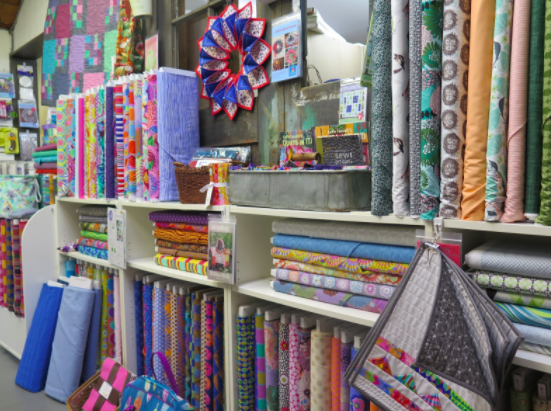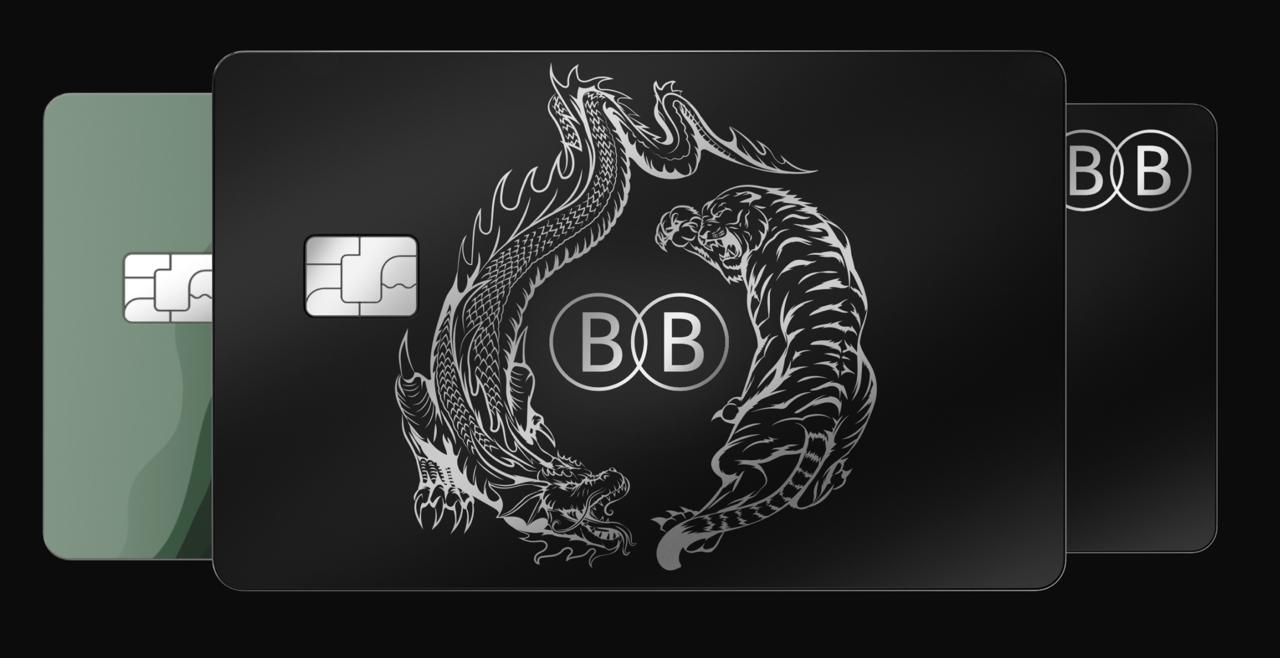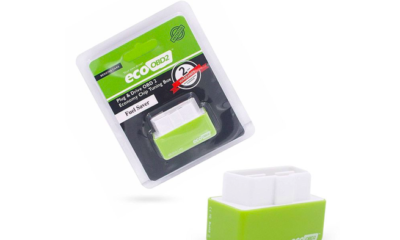Business
Five Things You Need to Start a Sewing Business

If sewing has been your passionate hobby for years, and people are constantly telling you that you are so good at it you should start your own business, then maybe it’s time you stop dreaming about it and take the leap into small business ownership!
But once the decision is made, there are some things that you need to do to get started on the right foot—or maybe, you could say, get started on the right presser foot!
The First Step Toward The Big Opening of Your Business
Make a plan. Before you begin, it’s important to map out an entire plan of action. This will give you a step by step plan to follow so that you can check off goals you meet as you go.
First, choose your specialty, and decide on your target market. Do you want to focus on alterations and repairs? Custom sewing jobs? Designing? Creating women’s wear or children’s clothing? Do you want to be a custom bridal shop? Bridal shops are almost always immediately profitable. Brides enjoy being able to collaborate with a great seamstress in order to design their dream dress and have it be one of a kind. Having a single success with your first bridal party can get your business off to a booming start.
Decide how much money you will need upfront in order to get started, and then estimate your ongoing costs. Estimate how long it will be before you should begin breaking even on your expenses and income.
The Second Step Toward Your New Business
Decide how you will make money. The most common way that sewing businesses make money is in alterations. This can be for everyday clothing, but for the most part the big business will be alterations for formal events such as weddings and proms. Money can also be made by custom designing clothing. You will have to decide if you want to focus on one area of sewing, or several areas. Do you want to alter wedding and bridesmaid gowns? Or are you willing to design and make wedding and bridesmaid gowns? Is custom baby and children clothing your passion?
The cost of materials and the amount of time necessary for each project will have to be estimated in order for you to set a price that will cover both and encourage a profit. A small sewing business with a single employee can make anywhere from $20,000 per year to $60,000 or more. If you exceed $60,000, you could consider adding an employee and growing your business enough to make a great deal more.
Profit increasing plans can include such additions to your business as adding a quilting club, or sewing classes.
The Third Step Toward Your Successful Sewing Business
Choose a location. Most startup sewing businesses begin in the owner’s home. Once profits are established, you could consider renting a space. Spaces close to a laundromat or specialty clothing shops such as those for formal wear are ideal.
To start your business in your own home, you will need a dedicated space that can be made to look professional. A spare bedroom, or enclosed porch works well. In rural areas, a climate-controlled shed, barn, or garage may also be suitable. You will need plenty of room for tables, equipment, shelves and racks for fabrics, and possibly a dressing area for clients to try on items or be measured for alterations.
The Fourth Step Toward Super Successful Sewing
Gather your equipment. You will need a very good, dependable sewing machine. If you already have one that works well for you and you are comfortable with, it may be all you need to get going. However, if you are expecting a booming business, or when your small business grows, you should consider a commercial—or industrial—sewing machine. These are very heavy-duty machines that can run for long periods of time and function highly efficiently and rarely need maintenance.
You will require a large supply of needles and pins, and that means in nearly every size and variety. Keeping these on hand will save time-consuming trips to the store to get the ones you need for different projects.
You will need a good serger for cutting and surging seams on tailored pants, dresses, and other items. A serger prevents fraying, which is essential when dealing with clientele.
You will need a great clothing steamer, an iron, and an ironing board. Nothing looks less professional than delivering wrinkled items to a customer.
Your new business will require a wide range of cutting tools, including scissors, cutting wheels, and rotary cutters to allow you to cut multiples of the same items in stacks to save time.
Rulers and measuring devices are also critical. A measuring board can be beneficial for sewing business owners.
Basic business supplies such a paper, pens, business cards, staplers, etc. will all have to be on hand and ready before you begin your business.
The Fifth Step Toward Successful Sewing
Advertise! Putting up flyers in places like laundromats, dry cleaners, and fabric shops is extremely helpful. Further, you should have a logo designed and be sure to mark your flyers and business cards with the same logo. You could consider getting your business off to a booming start by adding a coupon deal to your first flyers.
A website is also critical. Having a website designed and set up, with relevant information on your flyers and business cards, allows people to get all of the information they need about your business quickly and easily.
Place ads in local newspapers and get involved in community projects so people know your name and can start recommending you to friends. This is the best way to spread awareness of your business through word of mouth. Some ideas are helping to alter costumes for local school or church plays and getting involved in costumes for your local community theater.
Once you’ve gotten these five critical steps checked off of your list, your brand-new sewing business should be up and running!\. The sewing machine will be whirring away and your brand new customers will soon be ringing your bell and setting up appointments. And you can finally live your dream! Chances are that you’ve always loved sewing, and nothing thrills a sewing enthusiast more than new projects. With your own sewing business, you no longer have to try to tame your desire to sew because you can indulge in your passion for profit!
Business
Remote Professionals Getting More Value for Their Work Thanks to Borderless Banking

Not too long ago, the idea of working remotely from an island in Thailand or a co-working space in Berlin sounded like the kind of fantasy only tech moguls or backpacking freelancers could afford.
Fast forward to today, and it’s as good as a global reality. Millions of professionals have cut the cord from traditional office life in exchange for flexibility, freedom, and a work-life balance that fits their personal rhythm and not their employer’s timezone.
However, as remote work has reshaped how people earn a living, it’s also pointed out the existing limits to most of the world’s financial systems. Traditional banking simply wasn’t built for a workforce that’s always on the move, operating in multiple currencies, and getting paid across borders.
Thankfully, that’s where borderless banking like Black Banx have proven vital, and has quietly transformed the way money is managed for people vacationing and working overseas alike.
The Rise of the Remote Work Economy
Remote work isn’t just a pandemic-era trend that faded with Zoom fatigue—it’s become a defining feature of the modern workforce. A recent survey revealed that over 39% of Gen Z and Millennials planned to live and work abroad for extended periods this year, many staying six months or more in a single location. That’s beyond a short trip, and can be considered as good as a sabbatical with a substantial lifestyle shift.
According to recent estimates, the digital nomad economy now also contributes as much as US$787 billion annually to the global economy. And this isn’t just entry-level gig work. A third of digital nomads earn between US$100,000 and US$250,000, while another third take in US$50,000 to US$100,000 annually.
It is indeed evident that the manner in which many make a living has changed. Unfortunately, most financial systems haven’t kept up.
Where Traditional Banks Are Still Falling Short
For those who have ever tried to open a bank account abroad or receive payment from a foreign client, they already know the drill: the paperwork is endless, delays are frustrating, and the fees? So much to do, even for the smallest amounts of money.
Just to name few of the hurdles remote workers still face with conventional banking:
- Account setup restrictions: Need proof of residence, tax IDs, or a local job offer—things many digital nomads simply don’t have.
- Slow international transfers: Payments can take days to process, which is a nightmare when rent’s due.
- High foreign exchange fees: Currency conversions often come with steep, hidden costs.
- Limited multi-currency support: Most banks still force users to operate in a single currency, making financial planning chaotic at best.
And perhaps most tellingly, many banks have digitized their operations but haven’t personalized their services. According to Accenture’s 2025 Banking Trends Report, while digital transformation has improved efficiency, it often sacrifices the customer experience. That’s not great news for people who live outside the lines.
Borderless Banking for Professionals Across the Globe
The concept of borderless banking goes far beyond wiring money internationally. Fundamentally, it’s also about being able to eliminate the friction between people and their money, no matter where they are in the world, and maintaining an ecosystem where geography, bureaucracy, and currency don’t stand in the way of financial freedom.
A working example of this is Black Banx, a Toronto-based fintech founded by German billionaire Michael Gastauer. Since launching globally in 2015, it has grown to serve over 78 million clients in 180+ countries as of Q1 2025, proof that people take to digital banking solutions when it is accessible, affordable, and is useful in just about any locale.
In the first three months of this year, Black Banx had also earned US$4.3 billion in revenue and US$1.6 billion in pre-tax profit, more than double from the same quarter the previous year and showing it has consistently delivered tangible value to global customers—remote professionals included
How Borderless Banking Maximizes Value for Remote Workers
1. Instant Account Access—No Strings Attached
The times of hunting down local branches or collecting endless documents just to open an account are finished. With borderless banks, users can open an account in minutes using just a photo ID—no proof of address or income required. That’s a lifesaver for anyone living outside their passport country or hopping from one location to another.
2. Multi-Currency Mastery
Managing money in multiple currencies used to mean juggling several accounts—or worse, losing money on conversions. Borderless platforms like Black Banx support 28 FIAT currencies and allow real-time currency conversions at competitive rates. That means remote workers can:
- Invoice clients in one currency
- Spend or save in another
- Hedge against local currency fluctuations
- Avoid excessive conversion fees altogether
3. Seamless, Real-Time Global Payments
Getting paid late, or paying others late, isn’t just inconvenient; it can damage relationships and disrupt your cash flow. With real-time payment support, remote workers can receive funds instantly, no matter where their clients are. This is particularly valuable for freelancers and entrepreneurs juggling multiple contracts across time zones.
Plus, bulk payment features and API integration streamline processes for those running teams or businesses.
4. Built-In Crypto Options
It isn’t surprising that many digital nomads are already deep into crypto. Whether it’s for investment, faster transactions, or avoiding traditional finance red tape, crypto is becoming essential.
Since 2016, Black Banx has allowed users to send, receive, and convert crypto (like BTC and ETH) within their accounts. That integration saves users from having to manage separate crypto wallets, and adds another layer of flexibility to their financial toolkit.
5. Secure Transactions
Remote workers often log in to work from cafés, coworking spaces, and airports, to name a few. Of course, this flexibility of being able to work almost anywhere should never come at the cost of security. Borderless banks like Black Banx use end-to-end encryption, AI fraud detection, and two-factor authentication to keep accounts safe from risky elements.
Financial Freedom, Not Just Convenience
Perhaps the most overlooked benefit of borderless banking is the freedom it provides. Not just to access money, but to fully participate in the global economy. For millions of professionals in underbanked regions like Africa, Latin America, Southeast Asia, borderless banking has become a gateway to financial inclusion and a way to take on opportunities that typically wouldn’t be available to them if not remote.
By removing barriers to entry, platforms like Black Banx empower underserved individuals to both take control of their finances and increase their earning power by working with companies from higher paying markets. This democratization of finance isn’t just good for individuals, it’s good for the global economy as a whole.
As Black Banx CEO Michael Gastauer put it: “Our multi-currency solutions enable businesses to tap into global talent without worrying about payment complexities. We make cross-border transactions as seamless as local ones.”
The Road Ahead
By 2030, the number of digital nomads worldwide is expected to soar past 60 million, according to the Forbes Technology Council. That means tens of millions of workers will be navigating foreign currencies, time zones, and financial systems—all while expecting the same seamless experience they’d get at home.
Indeed, remote professionals aren’t just looking for places to work—they’re looking for systems that work for them. In a lifestyle built on flexibility, traditional banking is proving too rigid, too slow, and too expensive.
Borderless banking services like those offered by the likes of Black Banx, on the other hand, offer exactly what today’s global workforce needs: instant access, multi-currency support, real-time payments, crypto integration, and enterprise-level security—all in a streamlined experience.
-

 Tech4 years ago
Tech4 years agoEffuel Reviews (2021) – Effuel ECO OBD2 Saves Fuel, and Reduce Gas Cost? Effuel Customer Reviews
-

 Tech6 years ago
Tech6 years agoBosch Power Tools India Launches ‘Cordless Matlab Bosch’ Campaign to Demonstrate the Power of Cordless
-

 Lifestyle6 years ago
Lifestyle6 years agoCatholic Cases App brings Church’s Moral Teachings to Androids and iPhones
-

 Lifestyle4 years ago
Lifestyle4 years agoEast Side Hype x Billionaire Boys Club. Hottest New Streetwear Releases in Utah.
-

 Tech7 years ago
Tech7 years agoCloud Buyers & Investors to Profit in the Future
-

 Lifestyle5 years ago
Lifestyle5 years agoThe Midas of Cosmetic Dermatology: Dr. Simon Ourian
-

 Health6 years ago
Health6 years agoCBDistillery Review: Is it a scam?
-

 Entertainment6 years ago
Entertainment6 years agoAvengers Endgame now Available on 123Movies for Download & Streaming for Free
